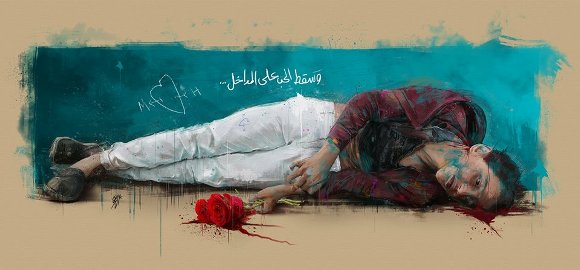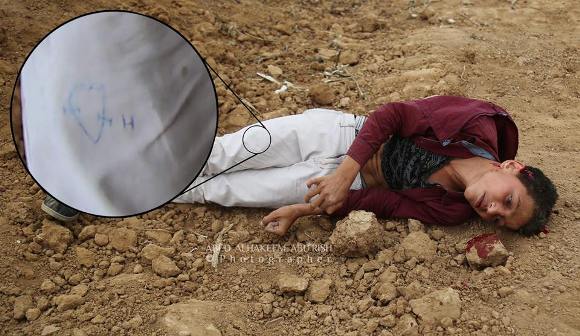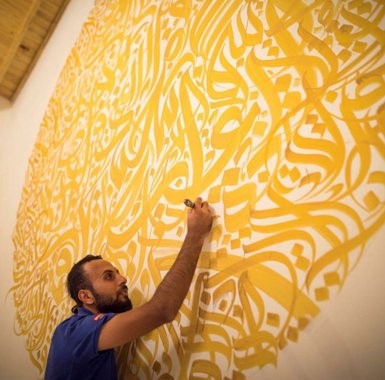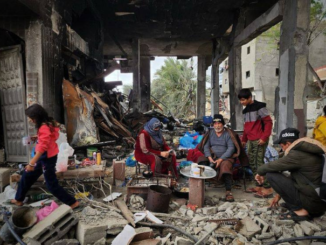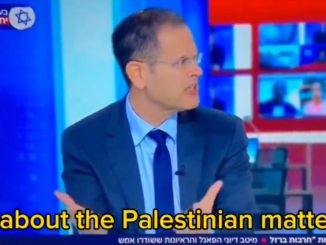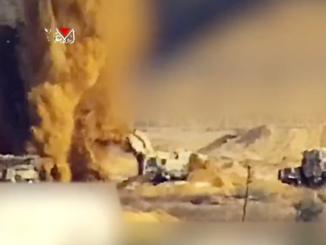
By Najlaa Eskafi
“Love fell down at the entrance of the besieged city. We stand at the gates, and pray on the holy soils. Perhaps – we will take back a sniff of its sand.”
These are the words of the 26-years-old Artist, Belal Khaled, on his painting of the martyred child Mohammed Ayyoub who was killed with a sniper’s bullet on the fourth Friday of the Great March of Return.
“It is the dearest work to my heart because I was so moved by that child. The boy was wearing beautiful clothes that he must have chosen carefully. He had a heart with two letters drawn on his trousers that reveal his untold love story. He sat from a distance watching everything and doing nothing. He did not even throw a stone, but that did not prevent an Israeli bullet from ending his life in the most brutal way. That is why I wanted to immortalize this painful image in a painting,” Belal said.
Although he has been living in Turkey for a short while now, Belal Khaled tries to be part of the Great March of Return somehow. As the distance will not allow him to record the events with his camera, like he did during the three wars waged by Israel on the Gaza Strip, he chooses to do it with his brush.
Since the Great March of Return started on the March 30, Belal has brought out his brush.
He said:
“The biggest motivation for me to put any other artwork aside and focus on documenting prominent scenes from the March, is that I am out of the country, and that there is nothing I can offer but trying to advocate the cause through my art.”
There is no doubt that art is a weapon, a strong one sometimes, with which the artist fights against the occupier. Belal did his first painting about the March of Return on its second day and he portrayed the map of Palestine illuminated by the shining sun of freedom.
Belal continued painting with passion. Here is another painting of the martyr journalist, Yaser Murtaja, who was killed while covering the Great March of Return.
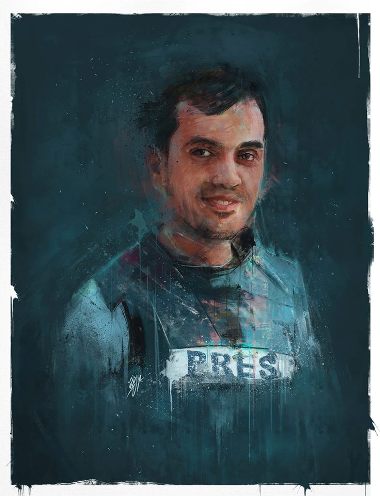
Belal was a good friend of Yaser.
“Yasser has always asked me to paint a picture of him. I did not know that I was going to dedicate the painting to him without hearing his opinion about it.”
Belal tries to keep up with the news that happens in his hometown, Gaza.
“When I watch the news, I keep searching for the touching stories that will affect people living abroad. Sometimes people take a general look at a picture but miss some details. I try to zoom in on these details. Some pictures can go unnoticed, so I focus on the feelings, the faces and the strange parts that will make more sense to the viewer”.
One of the paintings that became an icon, as described by followers, was that of Taghrid Ashraf, a young lady pictured while throwing a stone in the Great March of Return. Belal documented this photo with his calligraphic art to prove the participation of the Palestinian woman in the Return March.
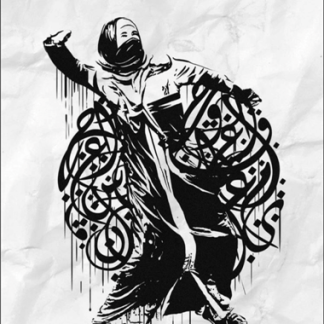
Belal’s happiness was beyond words when his friends gave him a photograph of the young boy, Mohammed Ayyash, carrying the painting he did of him to honor his bravery.
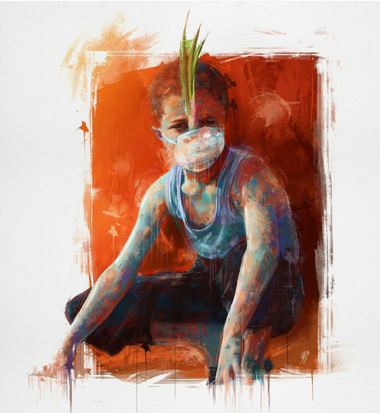
Ayyash was the first to put on a face mask with an onion in it to protect himself against the tear gas during the March. The picture was taken by the photographer, Mohammed JadAllah, and resonated widely inside and outside of Palestine.
The art that Belal is so good at is called Calligraphic Art.
“The art of transforming traditional Arabic fonts into certain patterns. I mix geometrical designs with the curves of the Arabic letters to emphasize the originality of the Arabic language and immortalize Arabic calligraphy after the wide spread of technology”.
The secret behind Belal’s passion for calligraphy is his love for graffiti. His favorite painting was “Entrapped Childhood,” which he co-painted on the wall of al-Zafer tower in Gaza. The painting is considered the largest graffiti painting in Palestine. “That painting became an icon in the hearts of people all around the world,” said Belal.
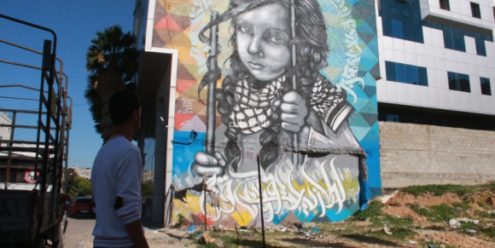
Belal had recorded with his camera the events of the Israeli aggression against the Gaza Strip in 2012 and 2014 for the Turkish Anadolu Agency. He believes that the most important photos that he took were those of the survivors of the 2014 war.
He documented, with his camera, people who were brought out from under the rubble. The most prominent was a young man, Ahmed Salama, who was saved from under the rubble wearing a face mask. The photograph circulated local and international journals and websites.
After the 2014 Israeli aggression, Belal worked for AJ+ and followed up with the stories of people he had photographed during the aggression. He said:
“I made a report on stories of people who had near-death experiences. The report showed the difference in their lives between 2014 and 2016. When a viewer sees the older picture, they won’t expect that these people actually survived, but I searched for the missing piece of the puzzle and told the world that these people moved on with their lives, carrying whatever psychological or physical injury brought about by the war.”
– This article was originally published in Ultra Palestine and was translated into English by Tawwasal. An edited version of the article is published with permission by the Palestine Chronicle.

